exaSound e62 DSD512 DAC and exaSound Sigma MkII Streamer: A Canadian-Made Gold Star Combination
Review by Jamie Gillies
In 2019, I purchased an exaSound e20 DAC and PlayPoint streamer from my good friend and fellow audiophile. He wanted to upgrade to experience the streaming capability of MQA and he wanted an integrated DAC/streamer. He bought a Lumin D2 and sold me the pre-MQA exaSound combination that he had purchased new from exaSound when it was released in 2014 and the streamer in 2015. In his perfectly calibrated system, the exaSound DAC and streamer sounded amazing. In my ‘mid-fi’ system, it dramatically changed the sound of my music. I had been using an Oppo 105 universal player for both disc spinning and streaming from external harddrives. While it was no slouch, as soon as I played files through the exaSound e20 DAC, music took on a new life. The DAC was simply better at processing sound, better than the internal DAC in the Oppo and certainly better than any CD player I had used. Prior to this, I was of the belief that unless you were to spend many thousands on a DAC from a company like Berkeley Audio Design or dCS, most DACs sounded the same. So whether you listen to Schiit Audio or Lumin, the only difference was some functionality and more options in terms of processing different sample rates like 24/192 or DSD or MQA.
I was simply wrong. The exaSound e20 and PlayPoint streamer made me realize what I had been missing: a bigger, demonstrably better, sound and the accessibility and functionality of streaming music, both from a service like Tidal and from my carefully curated high resolution digital download collection. With an app like MconnectHD or Linn Kazoo, my music streaming became the central part of my system. Further, exaSound provided an amazing DAC for DSD streaming. This is what designer George Klissarov is perhaps best known for: the first commercially available DAC to stream pure DSD256 files. The exaSound combination also shifted my listening tastes as I started to explore high resolution DSD files and to maximize the enjoyment of my extensive SACD collection. Finally, I was able to listen to the DSD stream of my SACDs directly and without compromise, through a DAC that was designed around DSD – with no PCM conversion or downsampling.
So when Noam Bronstein asked me what might be a good product to review next for Wall of Sound, I immediately suggested exaSound’s new e62 DAC, with full DSD512 1-bit conversion, and the Sigma Streamer that in combination with the e62 DAC has full MQA unfolding for streaming on platforms like Roon and Tidal.
In conversations with George Klissarov, exaSound’s president, I suggested that this review might provide something different. I was so familiar with the e20 and PlayPoint streamer that I could do an A/B comparison and see how much and in what ways had DAC technology changed since 2012, when the original e20 was launched. Could a decade of anti-jitter technologies, new streaming conversion rates, new DAC chips, and the emergence of MQA really make a noticeable change in sound and quality? George said, without reservation, “absolutely,” and that I should hear an improvement throughout. He sent me an e62 DAC and the very first Sigma Streamer Mk. II Version 2.0.
Setup
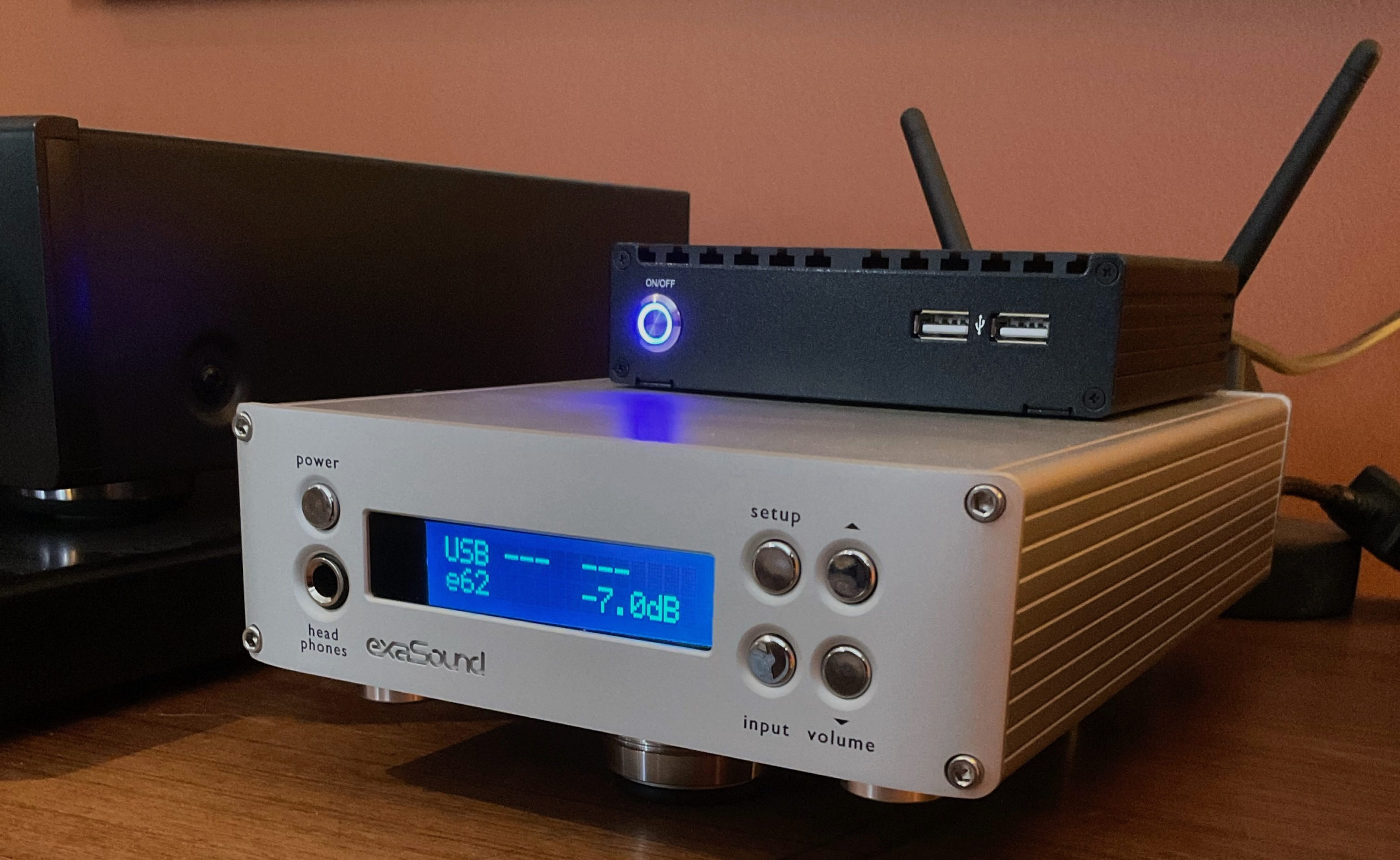 I removed the e20 and PlayPoint from my system and connected the e62 DAC and Sigma streamer with my trusty Kimber Kable B BUS Cu USB Type B cable. I connected my solid state drive with an Audioquest Carbon USB cable to the streamer as well as a Neotech NEET-3008 OCC Ethernet cable from my Bell box to the streamer for Tidal Masters HD streaming. I then connected the DAC to my NAD C165BEE preamplifier with Neotech NEI-3001 III RCA cables. I also connected my Oppo 105 player to the DAC with a Neotech NEVD-2001 Pure Silver SPDIF cable to try out CD playback through the DAC. I then connected the DAC and streamer to my sBooster linear power supplies. I used the MconnectHD app to access files on my solid state drive and the Tidal Connect app for streaming Tidal Masters from my iPad Pro control centre.
I removed the e20 and PlayPoint from my system and connected the e62 DAC and Sigma streamer with my trusty Kimber Kable B BUS Cu USB Type B cable. I connected my solid state drive with an Audioquest Carbon USB cable to the streamer as well as a Neotech NEET-3008 OCC Ethernet cable from my Bell box to the streamer for Tidal Masters HD streaming. I then connected the DAC to my NAD C165BEE preamplifier with Neotech NEI-3001 III RCA cables. I also connected my Oppo 105 player to the DAC with a Neotech NEVD-2001 Pure Silver SPDIF cable to try out CD playback through the DAC. I then connected the DAC and streamer to my sBooster linear power supplies. I used the MconnectHD app to access files on my solid state drive and the Tidal Connect app for streaming Tidal Masters from my iPad Pro control centre.
I did this after creating 20 track playlists both on my external drive and in Tidal. These were tracks that I was very familiar with through my existing system. Note that I do not use a laptop, do not have a NAS system, nor do I have a Roon account, so those additional features, including exaSound’s Mac or PC ASIO drivers, streaming from computer audio, or a Roon Nucleus and Roon file organizing app were not tested with the exaSound equipment. I just have one solid state external drive and a Tidal Masters subscription.
Listening
Based on my extensive listening to the exaSound e20, the e62 should at least mirror the design philosophy George Klissarov has always had with respect to exaSound products. As he writes, “we aspire to reproduce human voices and acoustic instruments the way they are, with nothing added and nothing taken away. Minimizing noise and distortion forms the basic foundation for our sonic fidelity.” But he adds that in the 2010s and 2020s, DAC chip, anti-jitter, asynchronous streaming, and re-clocking technologies have improved so much that exaSound have developed DACs that allow “accurate timing to bring digital audio to life and can make it indistinguishable from the sound of analogue sources.”
 To get my bearings I started with my old standby audiophile track, Dire Straits’ Your Latest Trick (Mercury SACD DSD). This Bob Ludwig Brothers In Arms remaster is so familiar to me that I can usually pinpoint any changes to the image. With the e62 in place, the line “echoes and roars and dinosaurs,” which in my system had showed a hint of sibilance on Mark Knopfler’s vocal and seemed slightly veiled in comparison to the rest of the track, was perfect. Gone was that sibilant inflection I had recognized, as the noise floor of my system was lowered. It was center stage, like Knopfler was in the room.
To get my bearings I started with my old standby audiophile track, Dire Straits’ Your Latest Trick (Mercury SACD DSD). This Bob Ludwig Brothers In Arms remaster is so familiar to me that I can usually pinpoint any changes to the image. With the e62 in place, the line “echoes and roars and dinosaurs,” which in my system had showed a hint of sibilance on Mark Knopfler’s vocal and seemed slightly veiled in comparison to the rest of the track, was perfect. Gone was that sibilant inflection I had recognized, as the noise floor of my system was lowered. It was center stage, like Knopfler was in the room.
 Next I tried a Steve Strauss track from his album Just Like Love (Stockfisch SACD DSD). Youngstown is a Bruce Springsteen cover and one of the best acoustic audiophile recordings I have heard. Here again, the e62 and Sigma streamer did not disappoint. Strauss’s voice was holographic and the instruments projecting from my Soliloquy 5.3 speakers were so enveloping that I thought I was in a high end audio test lab.
Next I tried a Steve Strauss track from his album Just Like Love (Stockfisch SACD DSD). Youngstown is a Bruce Springsteen cover and one of the best acoustic audiophile recordings I have heard. Here again, the e62 and Sigma streamer did not disappoint. Strauss’s voice was holographic and the instruments projecting from my Soliloquy 5.3 speakers were so enveloping that I thought I was in a high end audio test lab.
Already, I could hear a palpable difference in sound. Whether that was a result of the newer ES9028Pro chips in the design, or exaSound’s patented FemtoMaster super-low jitter quad-clock or a combination of other refinements in the DAC or streamer design, I couldn’t tell. But I was hearing something I had not heard before: a graceful, effortless rendering of streamed music.
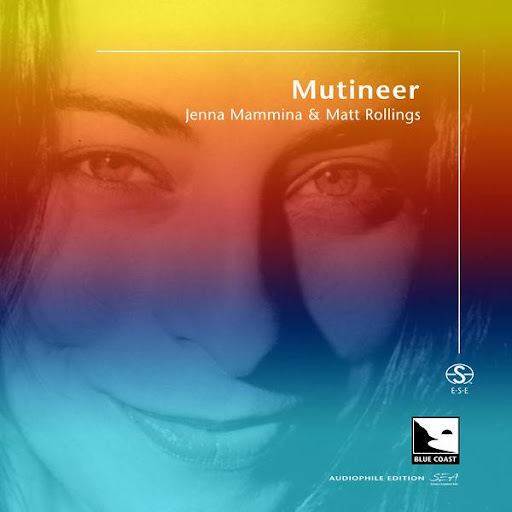 Up next was Jenna Mammina and Matt Rollings’ wonderful cover of Warren Zevon’s Mutineer from their Mutineer album (Blue Coast Music DSD256). Mammina’s vocals were so smooth and so exact that it felt like there was that blackness around her voice that audiophiles crave, like everything else in the soundstage was removed. It just hung in the air.
Up next was Jenna Mammina and Matt Rollings’ wonderful cover of Warren Zevon’s Mutineer from their Mutineer album (Blue Coast Music DSD256). Mammina’s vocals were so smooth and so exact that it felt like there was that blackness around her voice that audiophiles crave, like everything else in the soundstage was removed. It just hung in the air.
 I then tried Ivan Fischer and the Budapest Festival Orchestra’s fantastic recording of Dvorák’s Symphony No. 9 in E Minor, ‘From the New World’. This Channel Classics SACD has been a classical audiophile staple of mine. Again, the e62 rendered the DSD files of the first and fourth movements beautifully. I just shut my eyes and let it wash over me. Never had I heard this recording play with such authority and emotion.
I then tried Ivan Fischer and the Budapest Festival Orchestra’s fantastic recording of Dvorák’s Symphony No. 9 in E Minor, ‘From the New World’. This Channel Classics SACD has been a classical audiophile staple of mine. Again, the e62 rendered the DSD files of the first and fourth movements beautifully. I just shut my eyes and let it wash over me. Never had I heard this recording play with such authority and emotion.
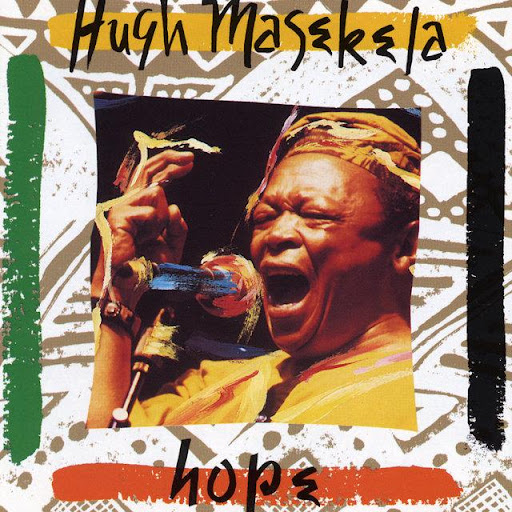 Lastly, I played Hugh Masekela’s Stimela (Coal Train) from the Analogue Productions SACD of his album Hope. This is such an excellent test track not only for the wonderful musicianship of Masekela’s live band – but also his vocals are a great reference point for testing out gear. The spoken word portions were crystal clear as if I was in the blues club where it was recorded in 1993.
Lastly, I played Hugh Masekela’s Stimela (Coal Train) from the Analogue Productions SACD of his album Hope. This is such an excellent test track not only for the wonderful musicianship of Masekela’s live band – but also his vocals are a great reference point for testing out gear. The spoken word portions were crystal clear as if I was in the blues club where it was recorded in 1993.
I was really loving the sound of this DAC.
I then switched to listening on Tidal. This would be my first experience hearing a full MQA unfold in my system. I have heard all of the debates and discussions about MQA as a technology. Some purists have an ‘untampered highest resolution possible’ argument and that MQA is nothing but lossy vaporware designed to increase the cost of equipment. Others suggest it is an after-album mastering way for labels and artists to shape the sound in the streaming stage to make it is as palatable to as many listeners as possible, and without ‘giving away’ the master recording.
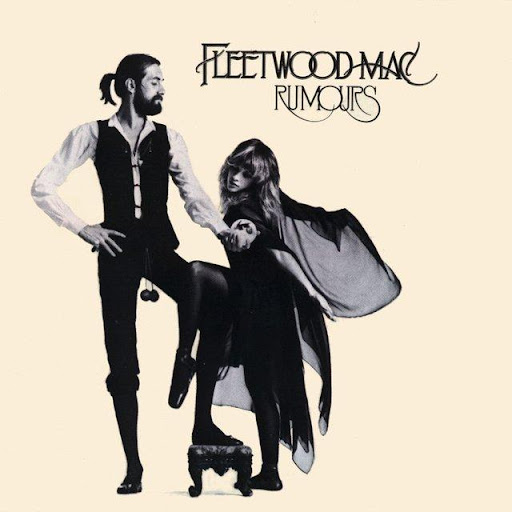 I began with Dreams (Reprise Tidal Master MQA) from Fleetwood Mac’s Rumours. I have been spoiled by both great vinyl copies, a really good flat transfer CD from the 1980s, and a pretty decent DVD-Audio copy of this album, not to mention a number of digital downloads. The full MQA unfold sounded on par with my high resolution file from the deluxe edition a few years ago.
I began with Dreams (Reprise Tidal Master MQA) from Fleetwood Mac’s Rumours. I have been spoiled by both great vinyl copies, a really good flat transfer CD from the 1980s, and a pretty decent DVD-Audio copy of this album, not to mention a number of digital downloads. The full MQA unfold sounded on par with my high resolution file from the deluxe edition a few years ago.
 Next I listened to Billie Eilish’s James Bond theme No Time To Die (MQA full unfold). Like my Blu-ray copy of the film that plays in my home theatre, Eilish sounded massive through my 2 channel system, with a controlled low end and vocals that were three dimensional.
Next I listened to Billie Eilish’s James Bond theme No Time To Die (MQA full unfold). Like my Blu-ray copy of the film that plays in my home theatre, Eilish sounded massive through my 2 channel system, with a controlled low end and vocals that were three dimensional.
 I then played the Hoff Ensemble’s Innocence from the wonderfully recorded Polarity – An Acoustic Jazz Project, from the Norwegian label 2L and engineer Morton Lindberg. The MQA master sounded as good as my DSD256 version that I was streaming. There was lots of air around the instruments and I could feel the depth of the soundstage.
I then played the Hoff Ensemble’s Innocence from the wonderfully recorded Polarity – An Acoustic Jazz Project, from the Norwegian label 2L and engineer Morton Lindberg. The MQA master sounded as good as my DSD256 version that I was streaming. There was lots of air around the instruments and I could feel the depth of the soundstage.
 I finished with Beck’s Guess I’m Doing Fine, from his Sea Change album (Geffen Tidal MQA). What I noticed, especially on the Beck track, was more nuance and microdynamics in the recording. I have this album on SACD, Blu-Ray Audio, CD and an MFSL CD, not to mention a vinyl copy. I know this track and for the first time, I was really hearing more here. I switched off the ethernet and streamed it over Wi-Fi from Tidal as well. It sounded better through the ethernet than the air. I then switched over to my 24/192 high resolution file on my SSD and listened. Again, I heard that nuance that was present on the Tidal MQA file. There was more music I was hearing, more going on in the recording.
I finished with Beck’s Guess I’m Doing Fine, from his Sea Change album (Geffen Tidal MQA). What I noticed, especially on the Beck track, was more nuance and microdynamics in the recording. I have this album on SACD, Blu-Ray Audio, CD and an MFSL CD, not to mention a vinyl copy. I know this track and for the first time, I was really hearing more here. I switched off the ethernet and streamed it over Wi-Fi from Tidal as well. It sounded better through the ethernet than the air. I then switched over to my 24/192 high resolution file on my SSD and listened. Again, I heard that nuance that was present on the Tidal MQA file. There was more music I was hearing, more going on in the recording.
I then tried playing CDs from my Oppo 105 via SPDIF to the exaSound e62 DAC, just to understand, even with a spinning disc and potentially more jitter, what the transport would sound like bypassing the internal DAC of the Oppo.
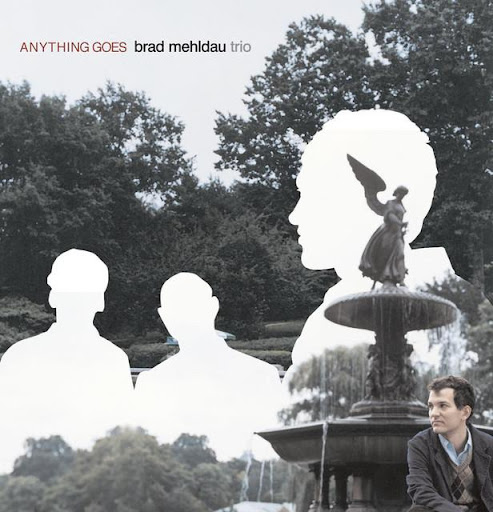 I played the Brad Mehldau Trio’s 2004 album Anything Goes (Warner Bros.). This is one of my favourite modern jazz recordings and another album I know pretty much by heart. His interpretations of Paul Simon’s Still Crazy After All These Years and Radiohead’s Everything In Its Right Place sounded just right – and after an A/B between the e62 and the Oppo, I noticed it had more impact through the e62 than with the Oppo’s internal DAC.
I played the Brad Mehldau Trio’s 2004 album Anything Goes (Warner Bros.). This is one of my favourite modern jazz recordings and another album I know pretty much by heart. His interpretations of Paul Simon’s Still Crazy After All These Years and Radiohead’s Everything In Its Right Place sounded just right – and after an A/B between the e62 and the Oppo, I noticed it had more impact through the e62 than with the Oppo’s internal DAC.
I continued to try some of my favourite silver discs, switched back to Tidal, then switched back to albums and tracks on my solid state drive, including some DSD512 tracks, 24/192 PCM tracks and redbook CD rips. The more I listened over the next couple of weeks, the more I came to appreciate the e62 DAC and Sigma streamer. I then swapped back in my e20 DAC and PlayPoint and tried a number of the tracks and albums again for a few days. They sounded really good and I would be just fine with this existing combination in my system. But the e62 and Sigma sounded great.
I am skeptical about new audio technologies and the latest DAC chip or design, or revolution in streaming. But after spending a couple of weeks testing the e62 and the Sigma Streamer, to my ears, I had not heard a better DAC in my life, at any price. Obviously, I am trying to review a product within the limitations of my own system. The e62 DAC put instruments and vocals in the room with me like no other component, including my speakers. Something opened up or a veil was lifted that got me much closer to the music.
Final Verdict
In the last five years, I have listened to Bluesound, Schiit, Bryston, Bel Canto, and Lumin DACs. My exaSound e20 (that originally retailed for $2,499 in 2014) I felt was slightly better than the newer Lumin D2 one-box DAC and streamer combination that retailed for $2,299 in 2019. The major difference was the ability of the Lumin to unfold MQA files. Head-to-head, I detected slight differences in how they converted digits into music, and overall preferred the exaSound sound. I purchased the DAC after listening to both. That was three years ago. I felt my exaSound e20 bested the other competitors at the time. With the e62, there is no contest. Priced at $2,799 USD, with the Sigma streamer at $750 USD (or the combination available through exaSound for $3,399), I have not heard a better DAC. This is a Made in Canada bargain, with gold plated balanced and unbalanced outputs, and the highest quality engineering and parts. The price is kept lower because of exaSound’s direct sales approach, i.e. there is no middle man or retailer markup. exaSound also makes the s82 Streaming DAC (priced at $6,499 U.S.), a one box solution, similar in style to other one box products, using the even newer ES9038PRO DAC chip. But for $3,100 less, my sense is that the cost of that is wrapped up in the expensive digital display and design challenges with offering a DAC and streamer under one roof. According to George Klissarov, the e82 enclosure is also machined from a single massive block of aluminum and is a significant cost contributor. The e82 may do more under one roof, but the performance of the e62/Sigma Streamer two-box combination ought to be enough for those looking to buy a DAC and streamer under $5,000.
Conclusion
I think exaSound delivers significant value in their products and manufactures a build quality I would associate with much more expensive high-end brands. Years of trial and error and testing have gone into these products to get the best quality DAC and streamer at an affordable price. With marketing and brick and mortar costs rising for many companies, some equivalent quality DACs cost much more than exaSound. Given my impressions during many weeks of testing and comparing the e62 DAC and Sigma streamer with an earlier predecessor combination, I was taken aback by how much the sound of my system improved with these products.
For its exemplary sound, a DAC that would work with a mid-priced system or in a cost-no-object fantasy sound room, and the fact that the exaSound DAC and streamer combination costs under $4,000, Wall Of Sound awards the exaSound e62 and Sigma Streamer Mk. II our Gold Star Award. If you are in the market for a new DAC and streamer, buy local, buy Canadian, and consider the impressive exaSound products. A tip of the hat to George Klissarov and the exaSound team in Toronto. Well done!
e62 DSD512 DAC Features & Specifications:
https://www.exasound.com/Products/e62DAC.aspx

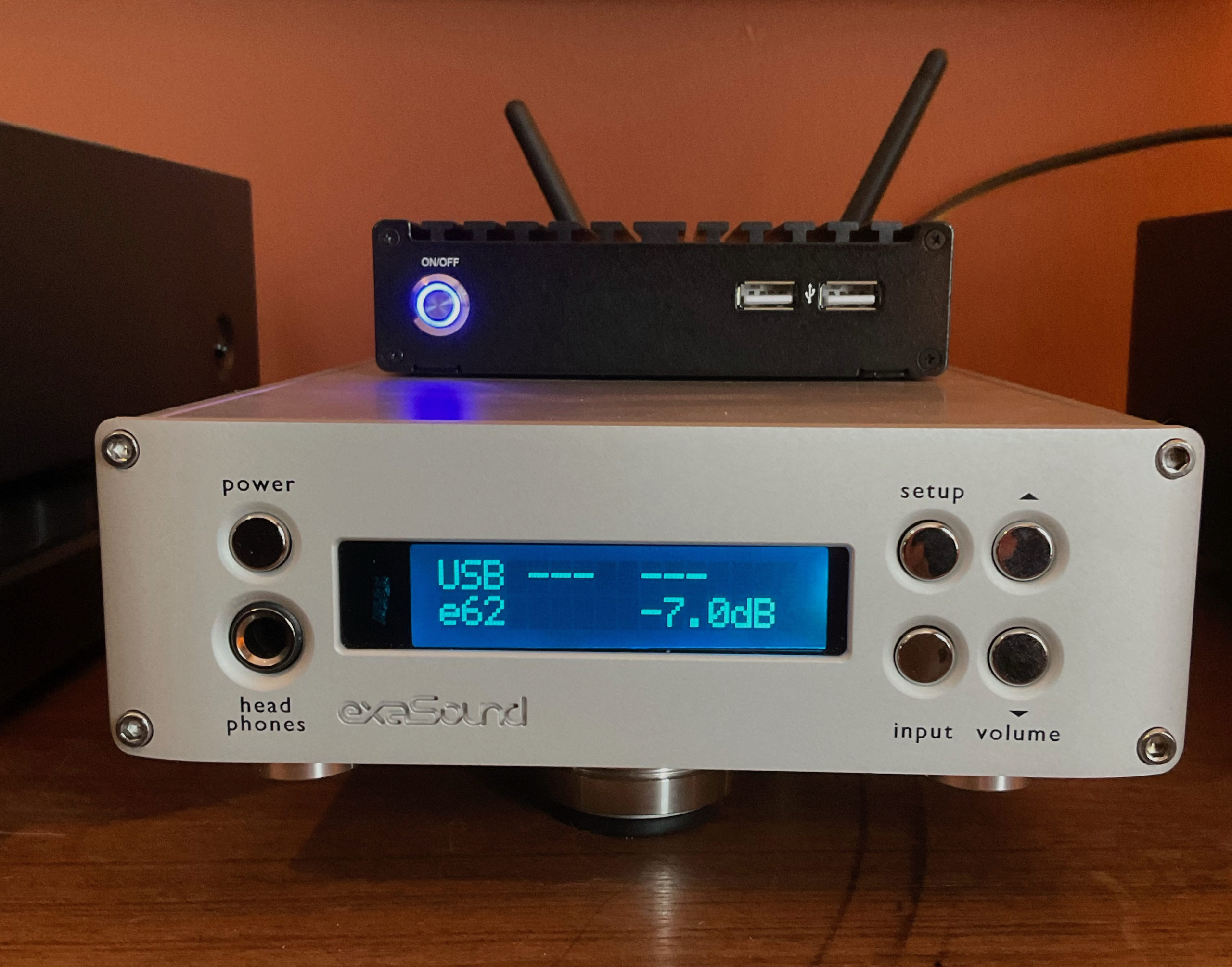
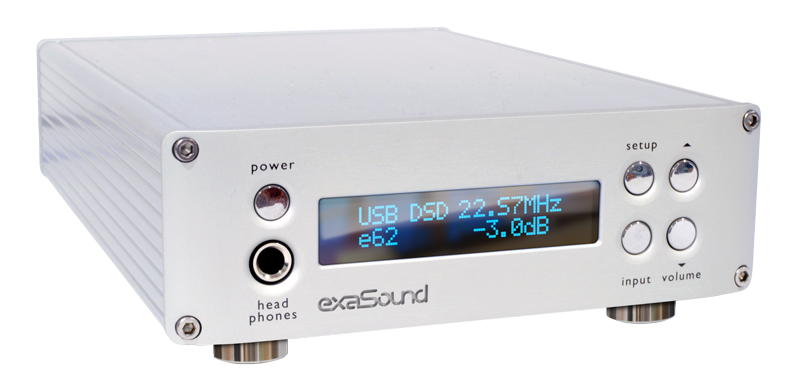






Another great review Jamie! As the original owner of the e20 and Playpoint Jamie references, I really did enjoy these products, but unfortunately, with the advancements of new technologies such as MQA and Roon, they were limited, so to capture my needs at the time, the Lumin fit the bill for me, with also gave me the ability to add a different DAC should i choose to. It’s great to see exaSound has developed these new pieces with new technology and capabilities that I was missing at the time. It’s wonderful to see a Canadian product competing at such a high level! Jamie has a keen ear for music which I have learned to really appreciate from our various music listening get togethers over the years. Also, in my time with the e20 and PlayPoint, George Klissarov was always very responsive to questions and great to deal with. His knowledge of this technology is second to none. Well done with these new pieces.
Hi,
Note to Jamie: Excellent review – thorough and comprehensive. Congrats.
Cheers,
David Neice
You changed the DAC and streamer. Would you be able to comment on the effects of each separately, i.e. e20 with Sigma and e62 with PlayPoint? This would be very useful to anyone with older exaSound gear. (e32 and PlayPoint Mk II here)
PS I agree about the responsiveness of George at exaSound. Great guy!
LOL! I messed up with my exaSound gear. I actually have the e32 Mk-II DAC and original PlayPoint. And I loves ’em.
Dan, the PlayPoint works seemlessly with both DACs. I found the response of the artwork better with the Sigma but the PlayPoint of course has the Display for those who like that. But the difference in the sound of the DAC from the e20 to the e62 was by far the most noticeable element. Effortless was the word I would use. The e20, and I assume the e32, are great DACs. But I was very impressed with the finesse and soundstage of the e62. It seems to take my music to the next level.
Good review. I notice you didn’t specify how you got your DSD files from SACDs to the E62. The Oppo 105D (which I also have) is certainly a good tool for that when combined with Sonore’s software. I use the Geerfab device to separate the Oppo’s digal audio output from its HDMI stream, then send the CD (redbook) files to the toslink input of the E62. Unfortunately, this doesn’t work for DSD files, as the E62, due to its unique USB firmware, doesn’t have DOP capability. This leaves us to deal with the vagaries of disc storage solutions, which all seem to have their own sound. This leads, of course, to a separate topic. But back to the system you used in the review. George Kissarov insists that, while the SBooster power supply helps the E62 (which I also found), it’s not useful for the Sigma Streamer. Yet in your review, you apparently use an SBooster on the Sigma also. Were you able to compare the streamer with and without SBooster? Was there a difference?